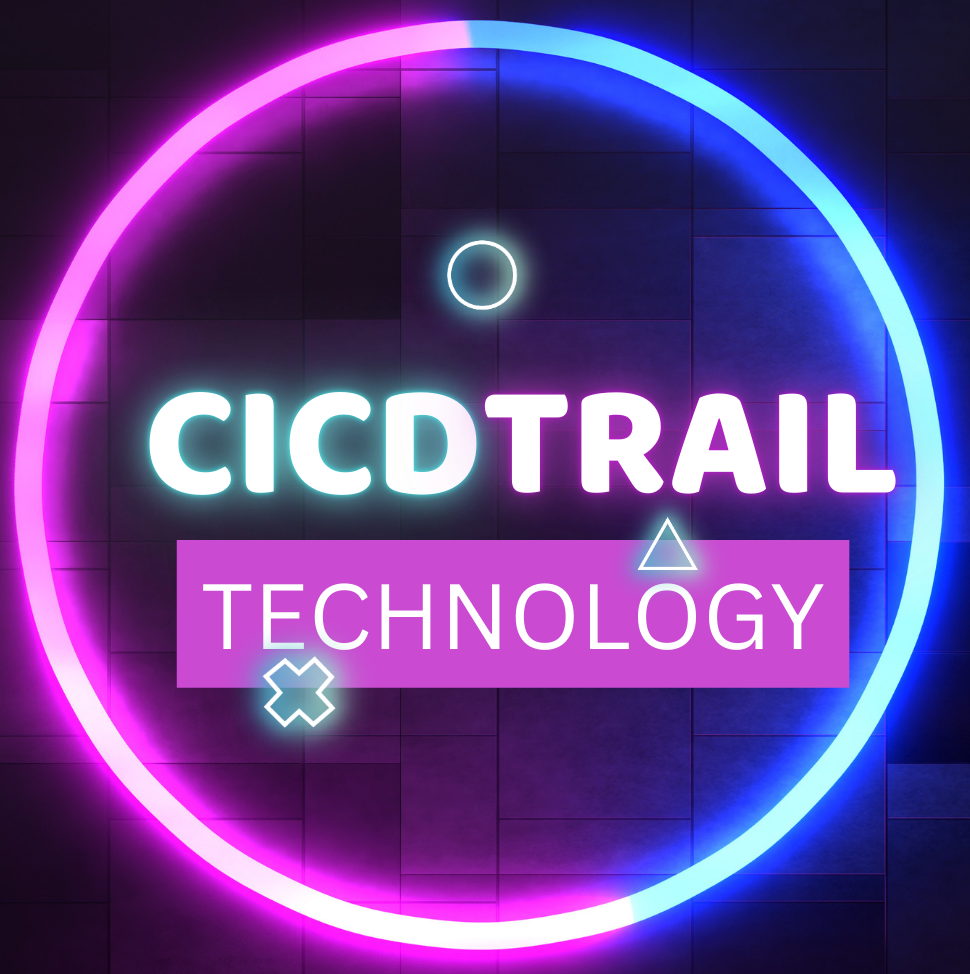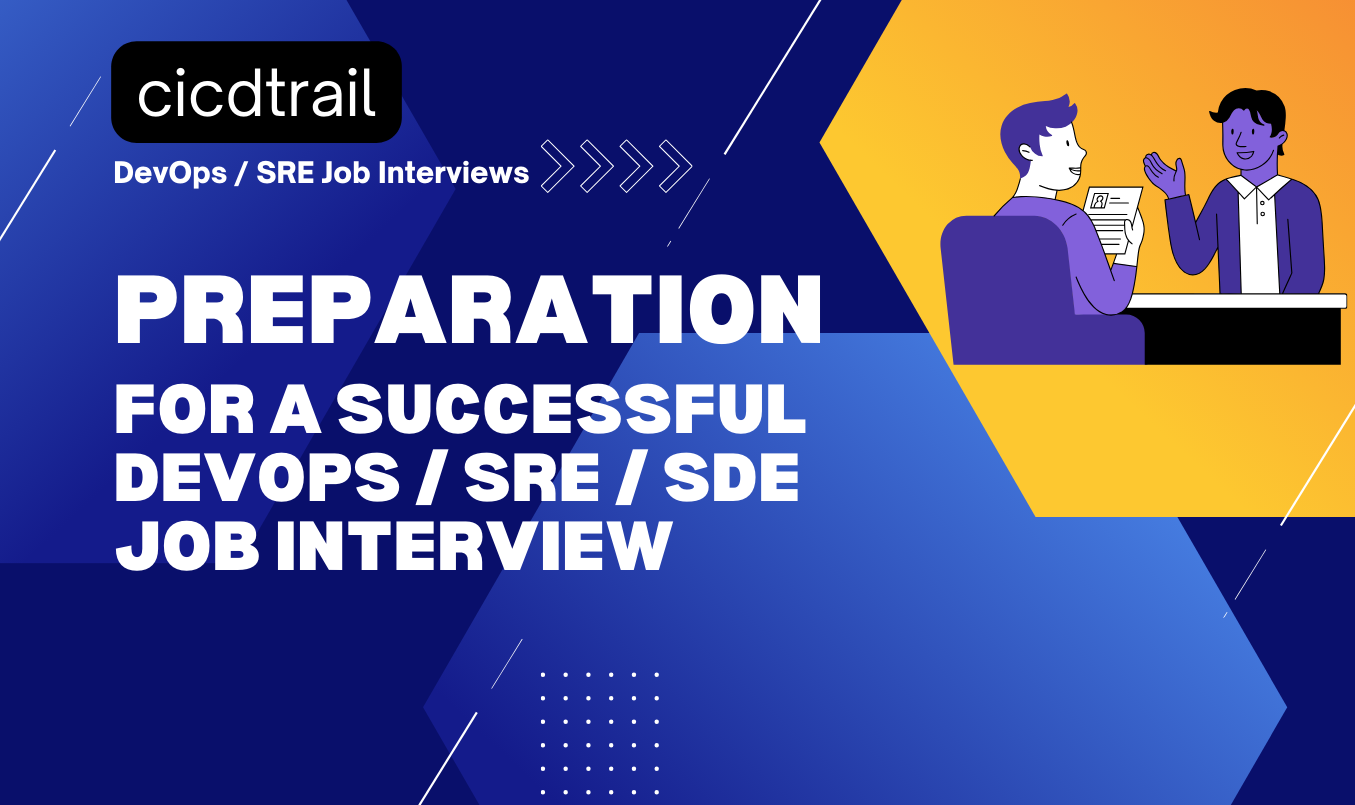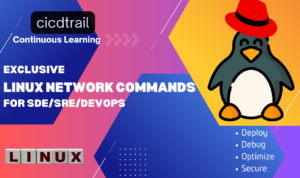It is becoming increasingly challenging for Software Engineers to learn wide range of different tools, tech Stack in rapidly changing Cloud and DevOps landscape. Today we are going to look into most important Cloud/DevOps interview questions and tips on how to prepare and crack any interview with ease? This may not be a complete list but it does provide quick insight into basics and fundamentals for better preparations. Cloud/DevOps Interview questions are generally mixed and based on different technical skills to assess end-to-end understanding of Software Engineering. Other then technical skills, companies/recruiters also pay attentions to soft skills, Communication, competency, collaboration skills, Incident Management, Change Management. Few “actual” DevOps Interview Questions:
- What is inheritance?
- What’s the different between class variable and instance variable?
- How packet travels from one one computer to another?
- What is DNS and how does it work?
- Can you use CI/CD pipeline to provision infrastructure?
- Using Zoom whiteboard, I was asked to draw VPC diagram with all required components. So a user on internet can send requests to web server in public subnet and triggering a Database update (INSERT or UPDATE) in private subnet.
Let’s take a quick look at Top DevOps Interview Questions?
- What is DevOps?
- What are the monitoring tools that you know?
- How will you troubleshoot if Application running slow?
- Explain Blue Green Deployment?
- What are the Patching methods followed in Production instances?
- What questions do you ask the Developer team when you are on boarding a new application?
- What is your approach if someone complains that application was working before and not working now?
- Explain major activities that you have performed?
- Explain major production outage that you have involved and how did you fix it?
DevOps Interviews Questions – Are you missing Computer Networking?
Understanding of Computer Networking concept is vital for Cloud/DevOps or any Software Engineering job interview. Here are few important questions and having understanding of these will greatly help:
- Difference between TCP and UDP?
- What is a router, and how does it differ from a switch?
- Purpose of DNS, and how does it work?
- What is NAT, and how is it used in networking?
- Understanding of OSI model, and what are its layers?
- Purpose of ARP, and how does it work?
- What is a firewall, and how does it protect networks?
- Difference between a hub and a switch?
- What is VPN, and how does it work?
- What is DHCP, and how is it used in networking?
- What is a MAC address, and how does it differ from an IP address?
- What is VLAN, and how is it used in networking?
- Purpose of ICMP, and how does it work?
- Difference between a LAN and a WAN?
- Understanding of Port mapping, Port Forwarding,
- Awareness of important ports, FTP, SSH, Telnet, SMTP, DNS, HTTP, HTTPS, MySQL, RDP, NTP, POP3
- Understanding of OSI Models and important protocols.
- Understanding of CIDR, subnet mask, and how does it work?
- How you will test/troubleshoot connectivity? PING, Telnet?
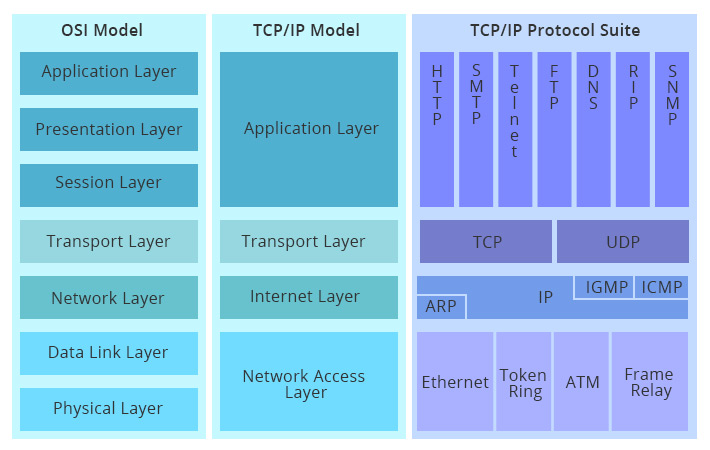
Cloud Basics – Organized structure for preparing DevOps Interview Questions?
- What is Infrastructure?
- What is Operating System?
- What is Application?
- What is Cloud Computing?
- What is Datacentre?
- What is On-Premises datacentre?
- What are Cloud Services?
- What is Shared Responsibility Model in Cloud Infrastructure?
- What are Cloud Service Models?
- What is IaaS?
- What is PaaS?
- What is SaaS?
- What are Cloud Deployment Models?
- What is Private Cloud?
- What is Public Cloud?
- What is Hybrid Cloud?
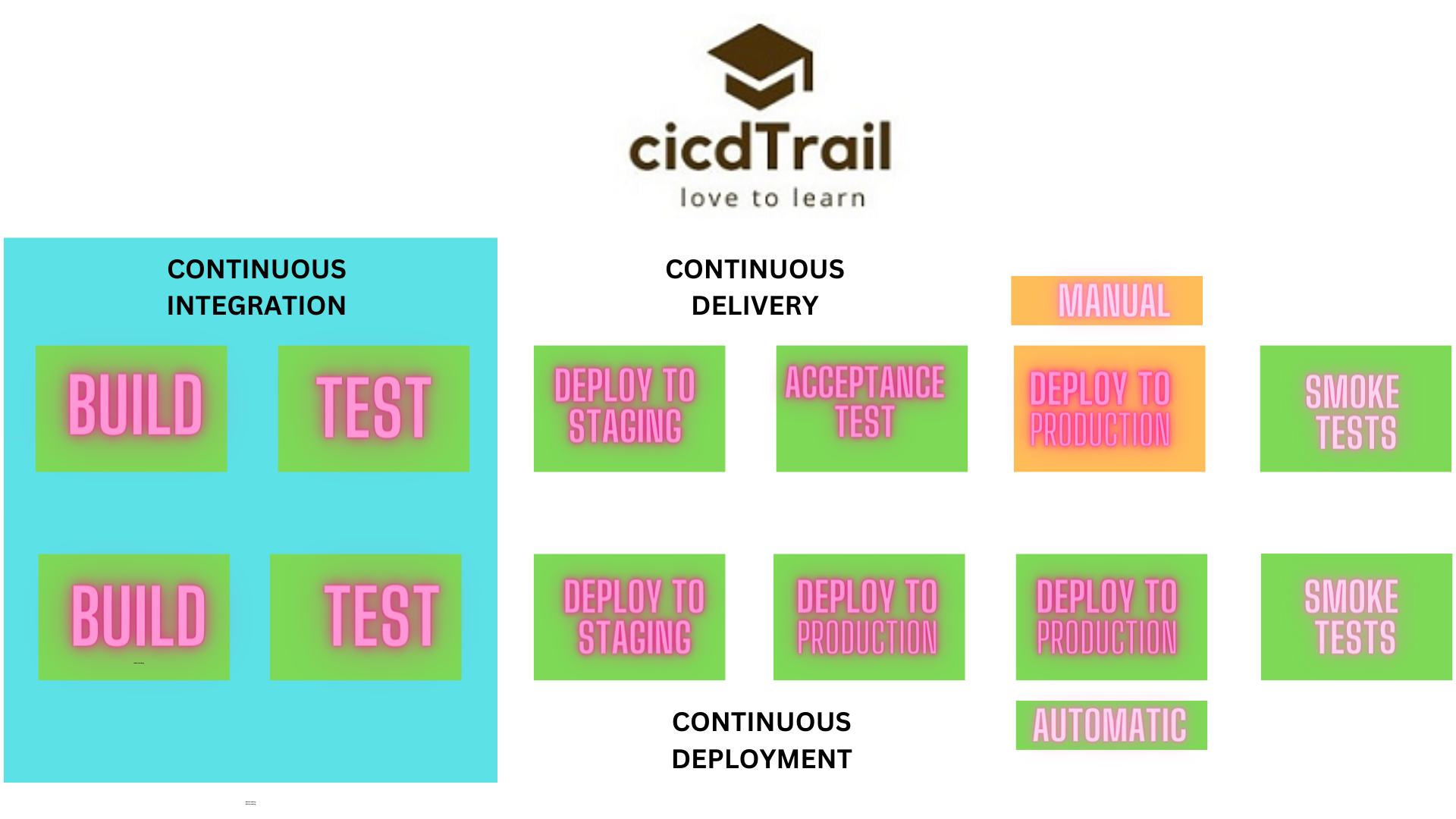
Is it even possible to prepare DevOps Interview Questions without AWS ?
- What is AWS Global Infrastructure?
- What is AWS Region?
- What is AWS Availability Zone?
- Explain what is AWS EC2?
- What is AWS Free Tier?
- What is AWS Pricing Calculator?
- How to create AWS EC2 instance?
- What is AMI – Amazon Machine Image?
- What are the AWS Instance Types available and how to choose Instance Type?
- What is AWS EBS Volume?
- What is AWS Key Pair?
- How to change EC2 Instance Type?
- How to explore AWS Billing Dashboard?
- What is Security Group in AWS?
- Why Security Groups are Stateful?
- What is AWS Lambda?
- How to Configure CloudWatch Events?
- What is CloudWatch Logs Group?
- How to setup S3 LifeCycle Rules?
- How to enable S3 Versioning?
- What is SNS?
- How to setup CloudWatch Alarms?
- How to monitor AWS resources using Cloud Watch Metrics?
- How to create IAM user?
- How to see list of S3 Object versions?
- How to revert the changes in S3?
- What are the S3 Versioning disadvantages?
- Is it possible to enable versioning only for some objects in S3 bucket?
- How to setup LifeCycle rules only for some objects in S3 Bucket?
- What are the Cloud Watch Alarm states?
- What is S3?
- What is S3 Object URL?
- S3 Storage Classes?
- Explain S3 Advantages?
- How to setup S3 LifeCycle Rules?
- How to enable S3 Versioning?
- What is CloudHealth?
- What is SNS?
- How to setup CloudWatch Alarms?
- How to monitor AWS resources using Cloud Watch Metrics?
- How to create IAM user?
- How to see list of S3 Object versions?
- How to revert the changes in S3?
- What are the S3 Versioning disadvantages?
- Is it possible to enable versioning only for some objects in S3 bucket?
- How to setup LifeCycle rules only for some objects in S3 Bucket?
- What are the Cloud Watch Alarm states?
- What is IAM Role?
- What is IAM policy?
- What is IAM user?
- What is IAM group?
- Difference between IAM role and IAM user?
- How to create custom IAM policy?
- What is Bucket Policy and how to write custom Bucket Policy?
- What is AWS CLI?
- How to install AWS CLI?
- How to write IAM custom policy?
- What are different IP Classes?
- What is CIDR Notation?
- What is Internet Gateway?
- What is Local Gateway?
- What is Default Gateway?
- What is Network id?
- What is Public Subnet?
- What is Private Subnet?
- What is Public IP?
- What is Private IP?
- How to create VPC?
- What is Route Table? How to create Route Table?
- What is Local and Internet Gateway?
- What is subnet?
- Difference between VPC CIDR and Subnet CIDR?
- Difference between default VPC vs. Custom VPC?
- What is NAT Gateway?
- What is Bastion Host?
- What is Load Balancer?
- What is Auto Scaling?
- How to integrate Auto Scaling and Load Balancer?
- What is Launch Configuration?
- How to setup ASG?
- How to integrate ASG with ELB?
- How to setup ELB health check settings?
- What are Min, Max and Des values in ASG?
- How to add ASG scaling policies?
- What is Load balancer Endpoint?
- How to configure user data and what are the advantages of user data?
- How to troubleshoot cloud-init issues?
- Discuss on ASG, ELB advantages?
- What is Multi AZ RDS deployment?
- What are the 3-tier Architecture best practices?
- Difference between Compute auto scaling vs. storage auto scaling?
- How to setup CDN using Cloud Front?
- Difference between Internal Vs. Public Load Balancer?
- What is 3-Tier Architecture?
- What is RDS?
- How to create RDS instance?
- How to connect to the RDS instance?
- How to add JDBC connection string in application?
- Can you tell me a few major tasks/activities done in AWS?
- How will you login to the private subnet instances?
- Differences between network ACL & Security groups?
- How will you monitor the ec2 instances?
- Can you explain IAM Role based access & Assume Role based access?
- Can you modify the policies of the role attached to the EC2?
- How will you encrypt the root EBS volume?
- Can I delete the custom AMI once the Instance Launched using that AMI?
- What is Latency Based routing in route53?
- What troubleshooting activities have been done in AWS so far?
- User is unable to upload 10GB file to an instance? What could be the issue?
- What is your job role in AWS?
- Can you stop the EC2 instance which is in the Auto Scaling group?
- Can you explain the difference between Application LB & Classic LB?
- Can we create A record for the ELB?
- Difference between CNAME vs. Alias Record?
- How many Security Groups can create to a single EC2 instance?
- EC2 server experiencing slow internet connection how to fix?
- How to add multiple ‘Internet Gateway’ to the VPC to increase the network speed?
- Can we create multiple subnets in VPC?
- How will you login to the Windows host hosted on a private subnet?
- Can I have Private subnet instances accessing the internet through Internet gateway?
- What are the EC2 provisioning tools used to launch the instances?
- How will you monitor Memory utilization from Cloud watch?
- How will you modify Launch Configuration when the Instances are already running in Auto Scaling?
- Have you ever done database backup & restore?
- How will you automate the EC2 snapshots?
- What are the disadvantages of NAT Gateway?
- How will you identify if the subnet is public or private?
- How will you resize the EC2 root EBS root volume?
- Clients receiving HTTP: 503 service unavailable or HTTP: 504 gateway timeout error message, How to fix?
- EC2 instance is no longer responding, how will you fix it?
- EC2 server throwing out of memory errors, how will you fix these issues?
- Do you know what a system manager in AWS?
- What are Cloud watch Events?
- How will you monitor disk and file system usage using Cloud Watch?
- Can I authenticate the EC2 without using Keypair?
- Can you explain the 3-tier architecture with high availability in each layer?
- Can I create ELB for the bastion hosts?
- What is VPN in AWS?
- Have you ever logged a case with Amazon?
- Where will you store ec2 snapshots?
- Have you ever configured the cloud watch metric?
- What is Life Cycle Hook in Auto Scaling?
- Instance is showing 1/2 state, how will you troubleshoot the issues.
- Have you ever worked on Capacity Planning?
- Explain to me Disaster Recovery Planning for Region Failures in AWS?
- Difference between ELB and EFS
- What is VPC peering?
- How to restrict particular source IP in AWS?
- How to create Cross IAM Role in AWS?
- What is Transit Gateway?
- What is AWS Lambda?
- What is Amazon AMI?
- Difference between EBS vs. EFS vs. S3?
- Difference between Security Group vs. Network ACL?
- How will you monitor VPC network flow?
- How to write AWS custom IAM policy?
- Explain VPN in AWS?
- Difference between Cloud Trail Vs. Cloud Watch?
- Explain AWS Auto Scaling Policies?
- What is CloudFront? Explain different Origins in CloudFront?
- Difference between Horizontal Scaling vs. Vertical Scaling?
- How to recovery AWS keypair to connect to the EC2 instance?
- What is Connection Draining?
- What is S3 Glacier storage class?
- What is DynamoDB?
- Explain steps in migrating on-premises servers to AWS cloud?
- How to add additional Private IP for EC2 instance?
- Explain what is 3-tier Architecture?
- What is Placement Group in AWS?
- What is the difference between Internet Gateway Vs. NAT Gateway?
- What are 2/2 checks in AWS EC2?
- Explain Route53 policies?
- What is Cross-Zone Load Balancing in AWS?
- What is the difference between Multi-AZ deployment and Read Replicas in RDS?
- How to enable Life Cycle rules to S3 Bucket folders?
GIT
- What is Source Code Management (SCM)
- What is versioning?
- Explain GIT Architecture?
- Explain GIT commands?

git init | git add | git status | git commit | git reset | git revert |
git log | git config | git remote | git pull | git push | git clone |
git branch | git diff | git restore | git rm | git checkout | git merge |
- How to install GitBash?
- What is Git local repository?
- What is Git remote repository?
- What is the difference between Git PULL, Git Clone, Git Fetch?
- How to add collaborators to the BitBucket Repo?
- How to add SSH keys to BitBucket?
- How to clone remote repository using SSH & HTTPS protocol?
- Explain Git Branching Strategy?
- What is the difference between git reset and git revert?
- what is the difference between soft reset and hard reset?
- Explain what is Pull Request?
- What is the branching strategy are you using in your environment?
- What is the difference Git Clone vs. Git fork?
- Explain Git repository life cycle?
- What are the different Git Merge types?
- What is Git rebase?
- Difference between Git rebase vs. Git Merge?
- What is Git Cherry-Pic?
- What is the branching strategy are you using in your environment?
Apache Maven
- What is Apache maven?
- How to install Apache Maven?
- How to create Maven folder structure?
- What are the pre-requisites for Apache Maven installation?
- How to check maven version?
- What is Artifact?
- What is Maven Build?
- What are Maven Goals?
- What is Maven local repository?
- What is pom.xml file significance?
Apache Tomcat – How to prepare for DevOps Interviews in 2023?
- What is Application Server?
- What is Apache Tomcat?
- How to install Apache Tomcat?
- How to deploy artifacts to Tomcat server?
- What is CATALINA HOME?
- How to add users in Apache Tomcat?
- How to start/stop Tomcat servers?
- What is the default port for Apache Tomcat?
- How to configure JAVA HEAP for applications?
NGINX
- What is reverse proxy?
- Difference between Forward vs. reverse proxy?
- How to add routing in the nginx.conf?
- Advantages of reverse proxy servers?
- How to secure app servers access limiting to only from Nginx proxy servers?
Jenkins
- What is Jenkins?
- How to install Jenkins
- What is Jenkins Job?
- What is Jenkins Plugin?
- What is Jenkins Credential store?
- How to setup Jenkins Build and Deploy Jobs configuration?
- What is Jenkins Poll SCM?
- Explain about Jenkins workspaces?
- How to setup Build pipeline plugin in Jenkins?
- What is Jenkins slave?
- What is CI/CD?
- How to setup CI/CD pipeline?
- What is Jenkinsfile?
- How to setup Multibranch Pipelines?
- What is Upstream and Downstream Job?
- Explain the difference between Continuous Delivery & Continuous Deployment?
- What are the plugins you used on Jenkins?
- Do you have any idea about ‘Pipeline As Code’?
- Explain the pre-checks you are taking before the production release?
- How frequently releases are happening in your setup?
- Explain what a slave Jenkins node?
- What is a Downstream job?
- How many concurrent build jobs can be run on single Jenkins?
- How to create a read only Jenkins user?
- What is the Multibranch Pipeline?
- Difference between Declarative Vs Scripted Pipelines?
- Where do you keep Token and Secrets while configuring CI/CD?
- How to enable concurrence in Jenkins?
- Explain Pipeline Stages for Build and Deployments?
- How to configure dependent Jenkins job. It should run when the previous job is successful. How do you configure it.
- What are the different job type can be created in Jenkins?
- What is Jenkinsfile and its importance? Syntax for that?
- Difference between Declarative pipeline and scripted pipeline in Jenkins?
- What are the Jenkins plugins that you have used in pipeline setup?
- What is Multi Branch Pipeline?
- Explain Jenkins Architecture?
- Explain how to configure Artifactory Plugin in Jenkins?
- What are the built in variables in Jenkins?
- How to add user input in Jenkins declarative pipeline?
- How to backup and restore Jenkins?
- What are the different ways to configure Jenkins slaves?
- What are the Jenkins Pipeline types?
- How to use Jenkins Shared Libraries?
- How to continue Jenkins job after one stage is failed?
Docker
- What is Container?
- Can you modify the container properties once the container is running?
- Explain docker architecture?
- Why do we use docker containers?
- Explain Docker Architecture?
- Explain Docker Commands?
docker pull | docker images | docker rm | docker rmi | docker create |
docker start | docker stop | docker inspect | docker logs | docker ps |
docker exec | docker network | docker compose | docker login | docker run |
docker volume | docker commit | docker cp | docker history | docker events |
docker pull | docker push | docker tag | docker attach | docker history |
- How to install docker?
- How to start docker daemon?
- What is default docker home directory?
- What is container registry?
- What is container image?
- What is Dockerfile?
- How to build container images?
- How to create container?
- How to re-tag container images?
- Explain Dockerfile Commands?
FROM | COPY | MAINTAINER | ADD | RUN | CMD |
ENTRYPOINT | ENV | WORKDIR | EXPOSE | WORKDIR | VOLUME |
- What is Docker Compose?
- How to write Docker file?
- What is Docker network?
- How to setup networking between multiple containers?
- What is Docker Volume?
- How to deploy multi containerized application using docker compose?
- Have you ever written Dockerfile? How to automate image creation and upload to the registry?
- How can specify resource limit for docker containers?
- Which commands it will create layers in docker image?
- How to login to a docker container?
- What commands available in Dockerfile?
- How to see stopped Docker Container Logs?
- What is Docker Swarm?
- How do you scan docker images for vulnerability checks?
- Explain what is the use of Docker Volumes?
- How will you cleanup unused Docker Images and Containers?
- Difference between CMD and ENTRYPOINT?
- Explain Dockerfile?
- How will you delete image of running container?
- How to delete unused Docker Volumes?
- What is intermediate container?
- What is Overlay network in Docker?
- Difference between Container and virtual machine?
- Explain different type of networks in Docker?
Kubernetes
- What is Monolithic Architecture?
- What is Microservices Architecture?
- What is Container Orchestration?
- What are principles of Container Orchestration?
- Explain Kubernetes Architecture?
- How to setup Kops bootstrap server?
- How to deploy Kubernetes cluster?
- What is namespace in Kubernetes?
- What is Kube-Controller in Kubernetes?
- How to deploy ReplicaSet Controller?
- What is Livenessprobe?
- What is Readinessprobe?
- What are deployment strategies in Kubernetes?
- How to Rollout new version of application?
- How to rollback to previous version of application?
- What is Deployment Controller?
- How to copy files from local to POD?
- How to access interactive shell of the POD?
- What is nodePort Service?
- What is ClusterIP service?
- What is LoadBalancer Service?
- What is Service Discovery in Kubernetes?
- What is kube-dns service?
- What is kube-system namespace?
- How to deploy EKS cluster?
- How to deploy application using helm?
- How to publish helm charts to Jfrog artifactory?
- How to prepare Helm Charts?
- Explain difference between Stateful vs. Stateless applications?
- What is Persistent Volume?
- What is Persistent Volume Claim?
- What is Kubernetes Metrics API server?
- Explain what Kubernetes Requests and Limits are?
- What is Horizontal Pod Autoscale?
- How to monitor POD resources utilization?
- What is Daemonset Controller?
- What is Statefulset Controller?
- What is Configmap?
- What is Elastic Stack and how to deploy Fluentd, Elasticsearch, Kibana stack?
- How to deploy Prometheus & Grafana stack?
- What is API Gateway?
- What is a Microservice?
- Difference between clusterIP vs. Loadbalancer services?
- How to deploy Microservices?
- What is Active MQ?
- What is MongoDB?
- What is Ingress Controller?
- How to deploy Ingress Controller?
- How to create Ingress Rules?
- Explain kubectl commands?
Kubectl create | Kubectl describe | Kubectl logs | Kubectl exec | Kubectl cp | Kubectl apply |
Kubectl run | Kubectl delete | Kubectl autoscale | Kubectl edit | Kubectl rollout | Kubectl scale |
Kubectl top | Kubectl version | Kubectl config | Kubectl taint | Kubectl auth | Kubectl patch |
- Can you explain Kubernetes master components?
- Difference between Statefulsets Vs Deployments?
- How to monitor PODs health?
- What are Liveness and Readiness Probes in Kubernetes?
- Explain Kubernetes Architecture and components?
- Explain difference between Monolithic Vs. Microservices Architecture?
- Explain what is POD network?
- Explain Helm Chart directory structure?
- How to mount a volume on pods?
- When Kubernetes master is down. What could be the impact?
- How can you check pod log files?
- How do you add worker node to Kubernetes cluster?
- What is pod evicted status?
- How can you roll back a deployment?
- How pod will communicate from one to another one in Kubernetes?
- Difference between docker and Kubernetes?
- Explain about K8s deployment manifest file?
- Explain your current K8s Architecture like how many nodes, masters, Deployment types etc?
- How many servers/Pods you handling currently in production?
- What is pod?
- How to run multiple containers inside a pod?
- What is the deployment strategy you are using in Kubernetes?
- What’s the difference between ClusterIP, NodePort and LoadBalancer service types?
- Explain about Taints and Tolerations in Kubernetes?
- Difference between self-hosted vs. managed Kubernetes?
- How to see list of Pods running in prod namespace?
- What are node affinity rules in Kubernetes?
- How to deploy multi container Pods in Kubernetes?
- How will you see logs of unhealthy Pod?
- What is Kube-Proxy?
- How to add additional worker nodes to the existing Kubernetes cluster?
- How to change ClusterIP service to nodePort service?
- What is Ingress Controller in Kubernetes?
- Explain your project Kubernetes cluster Architecture?
Python
- What is Python runtime?
- What are Python variables
- What are Data Types in Python?
- How to create Functions in Python?
- What are Built-in Functions in Python?
- How to use boto3 module in Python?
- What is the difference in List, Dictionary and Tuple?
Ansible
- What is Ansible inventory?
- Explain YAML Syntax?
- What is Ansible Playbook
- Explain difference between Play, Task, Playbook, Role in Ansible?
- What are Ansible Ad-Hoc commands?
- What is Ansible Module?
- What are Ansible Facts?
- Explain Ansible Role Structure?
- Explain Ansible Handlers?
- Explain Ansible Template files?
- Explain Ansible variables?
- Can you tell me an ansible inventory config file?
- Can you describe Ansible Roles directory structure?
- Explain Ansible use cases in your project?
- Container is running fine, but application is not accessible from end user, What could be root cause?
- How to check if a package is installed on a remote system using ansible?
- What is the use of handlers in ansible?
- How can you secure configuration files in Ansible?
- How will you use ansible for Continuous Delivery?
- Difference between shell and command modules in ansible?
- What is the difference Terraform vs Ansible?
- Explain use cases that you have delivered in Ansible?
- How will you run a Ansible role?
- How to fetch passwords from Ansible vault?
- What is Idempotency in Ansible?
- How to write ansible Playbook to provision EC2 instances?
- How to you use array in the Ansible?
- What are facts in Ansible?
Terraform is vital as part of preparation for DevOps Interview Questions?
- What is Infrastructure as Code (IaC)
- What is Terraform Provider?
- What is Terraform resource type?
- What is Terraform state?
- Explain Terraform Commands?
terraform init | terraform plan | terraform apply | terraform state |
terraform destroy | terraform validate | terraform import | terraform refresh |
- What is Terraform variable?
- How to use terraform outputs?
- What is terraform.tfvars file?
- How to reference attribute of one resource in another resource block?
- How to configure s3 backend to store state?
- What are the advantages of S3 Backend?
- Explain Terraform use cases in your project?
- Explain what is a Provider Plugin?
- How to import existing resources into a state file?
- How to work with multiple providers?
- Explain different types of provisioners used in Terraform?
- What is terraform module?
- Where do you keep terraform state files?
- What is terraform provider block?
- How to secure credentials in terraform?
- How will provision an EC2 using terraform?
- What is terraform data resource?
- What is Terraform refresh?
- Difference between local-exec and remote-exec in Terraform?
Linux
- Explain Linux Architecture?
- Explain Linux Commands?
touch | pwd | adduser | passwd | rm | mkdir |
ls | cd | visudo | sudo | chgrp | chmod |
addgroup | whereis | echo | yum | service | cp |
mv | rmdir | df -h | du -sh | find | lsblk |
- Explain Linux configuration files?
/etc/passwd | /etc/shadow | /etc/group | /etc/ssh/sshd_config | /etc/sudoers |
/etc/profile | /etc/hosts | /etc/fstab | /etc/resolv.conf | /etc/nologin |
- Explain Linux File/Directory Structure?
- What is Root directory in Linux?
- Difference between absolute path vs. relative path?
- What is Vi-Editor?
- Difference between Command Mode vs. Insert Mode in VI-Editor?
- What is Home Directory in Linux?
- Explain about Linux Permissions?
- Difference between File Vs. Directory Permissions?
- Explain what is sudo permission?
- What is Linux Filesystem?
- How to create File System?
- How to increase File System?
- How to create and attach EBS volume to EC2 instance?
- How to check disk file system utilization?
- What is Apache HTTP Webserver?
- How to install and configure HTTP webserver?
- How to host web application?
- How DNS works?
- What is Domain Registrar?
- What is Name Server?
- What is Authoritative Name Server?
- What is Resource Record?
- What is A record?
- What is CNAME record?
- Explain how SSH Login Works?
- Explain how Apache HTTP Web Server Works?
- What is Network Port?
- What is process and service in Linux?
- What is Private Subnet?
- What is Public Subnet?
- What is Private IP?
- What is Public IP?
- What is Route Table?
- What is traceroute command?
- How to see exit status of last executed command?
- What is $? in shell?
- What is the use of “#!/bin/bash” in the shell script?
- What is $$ and S! in shell script?
- How to check LISTEN ports in Linux?
- Write a shell script to validate whether it is a valid email id or not?
- Write shell script to download artifacts and deploy into tomcat server?
Have you appeared in any interview for Cloud/DevOps recently? It will be great to know what questions you asked or were asked. Please feel free to share in comment section or community channel
Hope this Cloud/DevOps interview questions list help in better preparations.
Mastering DevOps interview questions is more than just memorizing answers—it’s about understanding real-world scenarios, troubleshooting challenges, and applying automation to streamline workflows. Whether you’re preparing for a DevOps role or aiming to upskill, continuous learning is key!
For more in-depth insights, case studies, and hands-on guides, explore our DevOps Library 👉 CICDTrail Blog. 🚀
If you’re interested in collaborations, partnerships, or working with us, feel free to reach out—let’s build something impactful together! 💡
Good Luck!
Credit: List of questions has been compiled using help from various open sources channels, communities and will continue be updated regularly.
